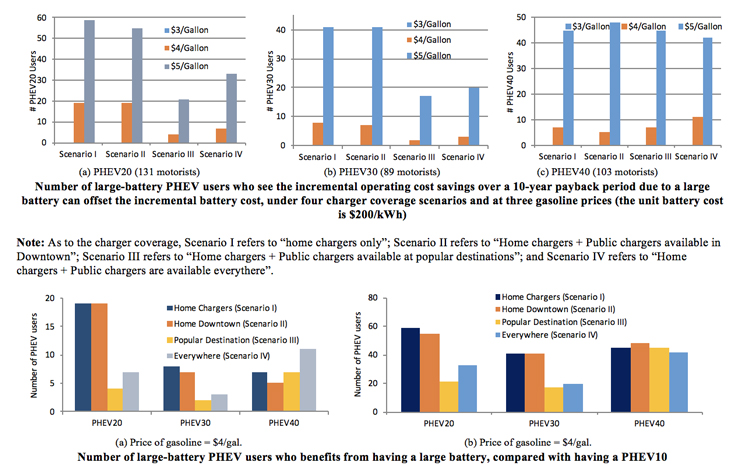Electric Vehicles
Xing Wu, Ph.D.
Professor

Sponsored by: US Department of Energy, as a sub-contract of Oak Ridge National Laboratory ($25,086), as PI; and Lamar Research Enhancement Grant ($5,000), as PI
Since 2012, I have conducted a series of research on EVs, with a focus on the performance of plug-in hybrid electric vehicles (PHEVs), using the real longitudinal GPS-based travel data of a large number of travelers. The data set used comes from the real travel information of 415 vehicles over 3-18 months collected in the Puget Sound Area (i.e., Greater Seattle Area), WA.
One study looks at the operating cost of PHEVs considering various charging scenarios and battery capacities, based on the real travel information of 415 vehicles over 3-18 months collected in Puget Sound Area (i.e., Greater Seattle Area), WA. This study found that (1) PHEVs could help save around 60% or 40% in energy costs, compared with conventional gasoline vehicles (CGVs) or hybrid electric vehicles (HEVs), respectively; (2) the incremental battery cost of large-battery PHEVs is difficult to justify based on the incremental savings of PHEVs’ operating costs unless a subsidy is offered for large-battery PHEVs; and (3) when the gasoline price increases from $4 to $5/gallon, the number of drivers benefiting from a larger battery rises significantly.
Another part of my research focused on the utility of PHEVs. The benefit of using a PHEV comes from its ability to substitute gasoline with electricity in operation. Defined as the proportion of distance traveled in the electric mode, the utility factor (UF) depends mostly on the battery capacity, but also on many other factors, such as travel pattern and recharging pattern. Conventionally, the UFs are calculated based on the daily vehicle miles traveled (DVMT) by assuming motorists leave home in the morning with a full battery, and no charge occurs before returning home in the evening. This study employs the aforementioned GPS-based travel data to investigate how such travel and charging behavior affects UFs. To do this, for each vehicle, trips were organized into a series of home and work-related tours. The UFs based on the DVMT are found close to those based on home-to-home tours. It is also found that the workplace charge opportunities significantly increase UFs if the CD range is no more than 40 miles.
Some results were reported in the following:
